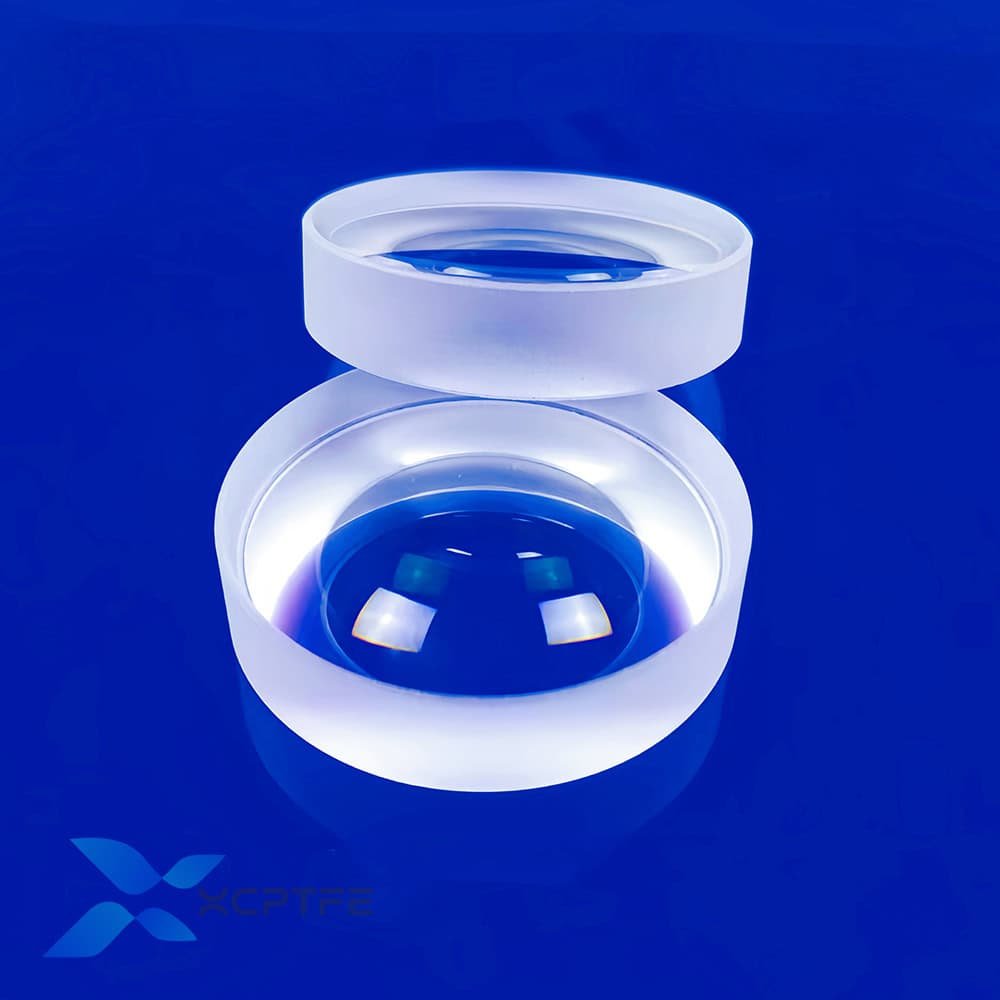Double-Concave Lens
Custom Fabrication
Custom Fabrication
Any question you want to know, just to contact email: cusoptics@micquartz.com.
What is Double-Concave Lens?

A Double-Concave Lens is a fundamental optical lens, and its name directly describes its physical shape. Both surfaces are concave inward. It is the most typical and symmetrical representative of divergent lenses.
Features
Shape: The center of the lens is the thinnest and gradually thickens towards the edge, forming a “concave” shape.
Optical function: diverging lens. Its core function is to deflect parallel incident visible light rays outward, making them appear to diverge from a point on the front side of the lens.
Focal length: has a negative focal length (-). This is a common feature of all divergent lenses.
How does Double-Concave Lens work?
Similar to plano concave lenses, double concave lenses cannot form real images. It can only form one kind of image:
Virtual image: Regardless of where the object is located, a double concave lens always forms an upright, reduced virtual image. This image is located on the same side of the object and cannot be projected onto the screen. It can only be observed through a lens.
Key Optical Characteristics
The core application of biconcave lenses is based on their ability to manipulate light beams:
Beam divergence: Its main function is to convert a collimated parallel light into a divergent light. Its divergence ability is usually stronger than that of a flat concave lens.
Beam expansion: used to enlarge the diameter of a laser beam or other beam.
Virtual focal length: Intersection of the reverse extension lines of divergent light rays at a point, which is the virtual focal point of the lens.
Application
With its reliable and symmetrical beam divergence characteristics, double concave lenses play a role in many fields:
Laser beam expansion: often used in combination with a biconvex or plano convex lens (forming a Kepler or Galilean telescope structure) to expand the diameter of the laser beam while reducing its divergence angle, widely used in fields such as laser processing, remote sensing, interferometry, etc.
Optical system aberration correction: In complex composite lens groups (such as camera lenses and microscopes), biconcave lenses can be combined with other positive lenses (converging lenses) to counteract aberrations (such as chromatic aberration and spherical aberration) generated by the positive lens, thereby improving overall imaging quality. Its symmetry provides flexibility for optical design.
Generating virtual images and vision correction: used in optical displays, eyepieces, and some optical instruments to create a reduced virtual image for users to observe. It is also one of the basic models of eyeglass lenses for correcting myopia.
Optical path shaping and extension: used to “elongate” the optical path or produce divergent effects to adapt to special optical system layouts, such as in optical isolators or beam expanders.
Advantages & Limitations
Advantage:
Symmetry: Its symmetrical design makes the optical path reversible, and light rays incident from any side have the same divergence effect, providing convenience for optical design.
Strong divergence: At the same focal length, its divergence ability is usually better than that of a flat concave lens.
Aberration correction flexibility: The two concave surfaces provide optical engineers with more design freedom to correct aberrations.
Limitations:
Not used for imaging: cannot be used alone to form real images.
Introducing aberration: As a single lens, it itself introduces significant spherical aberration and chromatic aberration.
Fragile structure: The center is very thin and requires more care during handling and installation to avoid damage.
Send Us A Message

